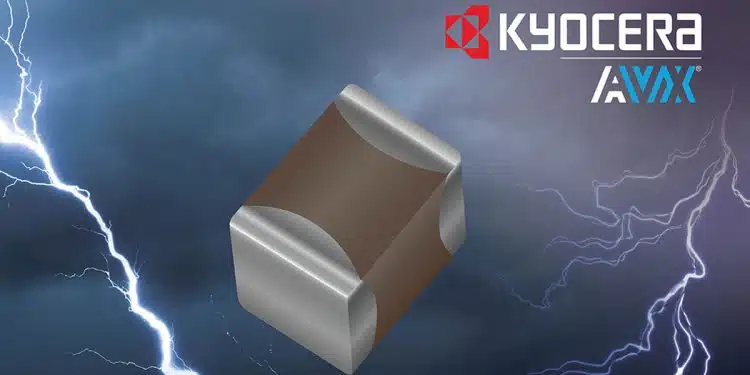KYOCERA AVX, a leading global manufacturer of advanced electronic components engineered to accelerate technological innovation and build a better future, has expanded its extensive portfolio of commercial surface-mount MLCCs with the release of its first safety-certified MLCCs, the new Class X1/Y2 KGK Series and Class X2 KGH Series.
Class-X and Class-Y safety-certified capacitors are designed to protect against surges and transient and provide EMI filtering AC line filtering applications. Class-X safety capacitors, which are also referred to as across-the-line capacitors, are placed between an AC line and neutral and designed to fail short, which will cause an overcurrent protective device like a fuse or circuit breaker to open and prevent any electrical shock hazards. Class-Y safety capacitors, which are also referred to as line-to-ground capacitors, are placed between the line and ground and are designed to fail open, which will allow noise and interference that the capacitor would typically filter but prevent any fatal electric shock hazards.
X1/Y2 safety capacitors like the new KGK Series can be used as an X1 capacitor in across-the-line applications or as a Y2 capacitor in line-to-ground applications. X2 safety capacitors like the new KGH Series are designed for direct connection across main voltages of 250VAC or more and reduce noise by reducing the device’s input impedance.
KYOCERA AVX’s new KGK and KGH Series safety-certified capacitors deliver high reliability, high stability, and high capacitance in small case sizes equipped with copper or silver/nickel/tin terminations that exhibit superior leaching resistance during reflow soldering processes. They are also halogen-free, RoHS-compliant, TUV- and UL-certified, and compliant with IEC 60384-14:2013 and EN 60384-14:2013. Ideal applications for the series include providing lightning and surge protection, EMI filtering, and isolation in modems, fax machines, telephones, and other consumer and industrial devices.
KGK Series Class X1/Y2 and KGH Series Class X2 safety capacitors are available in two dielectrics, NP0/C0G and X7R, and are rated for 250VAC and operating temperatures extending from -55°C to +125°C. They are also available with a range of capacitance values and tolerances. NP0/C0G variants offer capacitance values extending from 3pF to 1,000pF. X7R variants offer capacitance values extending from 100pF to 56nF. Optional features for the series include anti-arcing properties and KYOCERA AVX’s proprietary FLEXITERM® terminations.
- The new NP0/C0G KGK Series Class X1/Y2 safety-certified capacitors are available in three case sizes: 1808, 1812, and 2211. They are rated for 5kV and 6kV impulse voltages and capacitance values extending from 3pF to 680pF.
- The new X7R KGK Series Class X1/Y2 safety-certified capacitors are available in four case sizes: 1808, 1812, 2211, and 2220. They are rated for 5kV impulse voltages and capacitance values extending from 100pF to 4,700pF.
- The new NP0/C0G KGH Series Class X2 safety-certified capacitors are available in two case sizes: 1808 or 1812. They are rated for 2.5kV impulse voltages and capacitance values extending from 3pF to 1,000pF.
- The new X7R KGH Series Class X2 safety-certified capacitors are available in three case sizes: 1808, 1812, and 2220. They are rated for 2.5kV impulse voltages and capacitance values extending from 150pF to 56nF.
KGK and KGH Series safety-certified capacitors are packaged on embossed carrier tape and shipped on 7” or 13” reels. Lead-time for the series is currently 13–17 weeks.
“The new KGK and KGH Series safety-certified capacitors complement our current commercial MLCC product portfolio and, thanks to their broad slate of certifications, allow us to provide customers all around the world with a complete package of parts for any application that requires a safety capacitor,” said Zack Kozawa, Product Manager, KYOCERA AVX.































